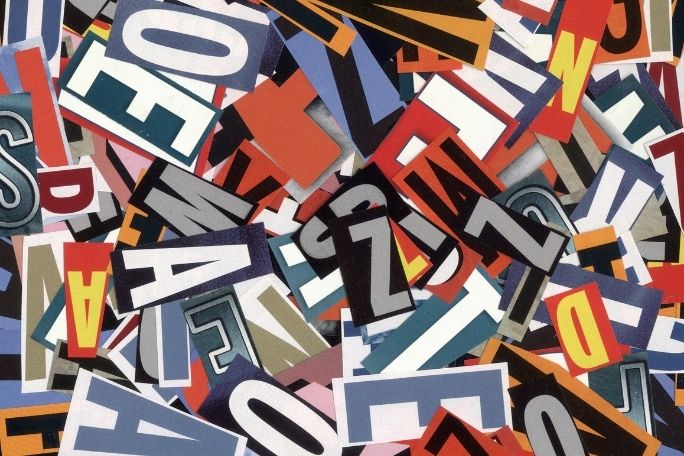Lesson summary
In this lesson of theory and art making, students will explore text in art. They will critically examine a range of contemporary artists who utilise text in their practices, before creating a text-based artwork of their own.
Learning intentions:
Students will...
- form opinions about the use of text in art, based on contemporary and historical practices
- use a range of drawing techniques to create works that comment on social issue.
Success Criteria:
Students can...
- analyse a range of artworks for their ability to engage using text
- choose and utilise appropriate art making techniques in their practice
- draw on existing artworks as inspiration in their art making practice.
Lesson guides and printables
Lesson details
Curriculum mapping
Australian Curriculum content descriptions:
Year 9 & 10 Visual Arts:
- Conceptualise and develop representations of themes, concepts or subject matter to experiment with their developing personal style, reflecting on the styles of artists, including Aboriginal and Torres Strait Islander artists (ACAVAM125).
- Manipulate materials, techniques, technologies and processes to develop and represent their own artistic intentions (ACAVAM126).
- Develop and refine techniques and processes to represent ideas and subject matter (ACAVAM127).
- Plan and design artworks that represent artistic intention (ACAVAM128).
- Analyse a range of visual artworks from contemporary and past times to explore differing viewpoints and enrich their visual art-making, starting with Australian artworks, including those of Aboriginal and Torres Strait Islander Peoples, and consider international artworks (ACAVAR131).
Syllabus outcomes: VAS5.1, VAS5.3, VAS5.4, VAS5.5, VAS5.6, VAS5.7, VAS5.8, VAS5.9, VAS5.10
General capabilities: Literacy, Critical and Creative Thinking.
Cross-curriculum priority: Sustainability.
Relevant parts of Year 9 & 10 achievement standards: Students evaluate how representations communicate artistic intentions in artworks they make and view. They identify influences of other artists on their own artworks. Students manipulate materials, techniques and processes to develop and refine techniques and processes to represent ideas and subject matter in their artworks.
Unit of work: Creative Sustainability – Visual Arts – Year 9 & 10.
Time required: 140 mins.
Level of teacher scaffolding: Medium – Facilitate class discussions and student art making.
Resources required
- Student Worksheets – one copy per student
- Device capable of presenting a video to the class
- Student’s own Visual Arts Process Diaries
- Sticky notes
- A class set of lead pencils and Calligraphy Brush Pens or other calligraphy pens (in a variety of colours)
- Good quality A3 paper – one per student
- Optional: Calligraphy Techniques handout, printed
Skills
This lesson is designed to build students’ competencies in the following skills:
- Collaboration
- Communication
- Creativity
- Critical thinking
- Digital Literacy
- Problem Solving
Additional info
Faber-Castell has long understood the importance of creativity to all people, especially to young people. It is also continuously searching for environmentally friendly processes and high-quality materials to enhance children’s creative experience throughout every development phase. For more information about Faber-Castell, click here.


Welcome back!
Don't have an account yet?
Log in with:
By signing up to Cool.org you consent and agree to Cool's privacy policy to
store, manage and process your personal information. To read more, please see
our privacy policy here(Opens in new tab).
Create your free Cool.org account.
Many of our resources are free, with an option to upgrade to Cool+ for premium content.
Already have an account?
Sign up with:
By signing up to Cool.org you consent and agree to Cool's privacy policy to
store, manage and process your personal information. To read more, please see
our privacy policy here(Opens in new tab).